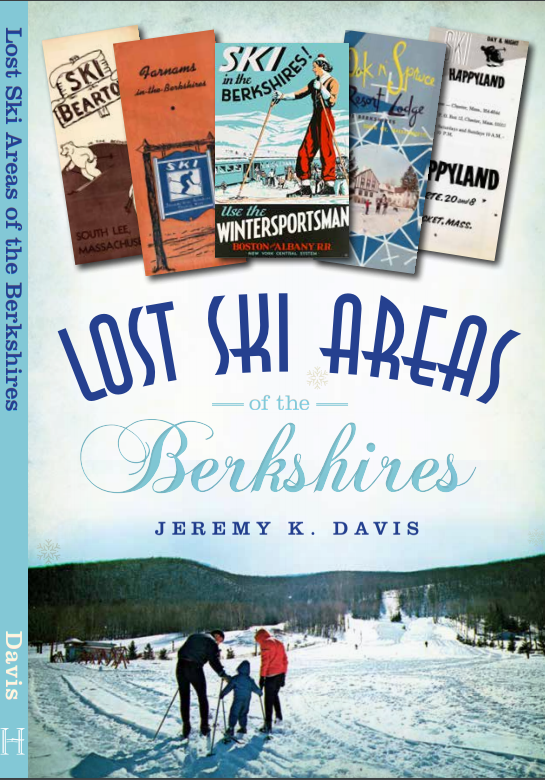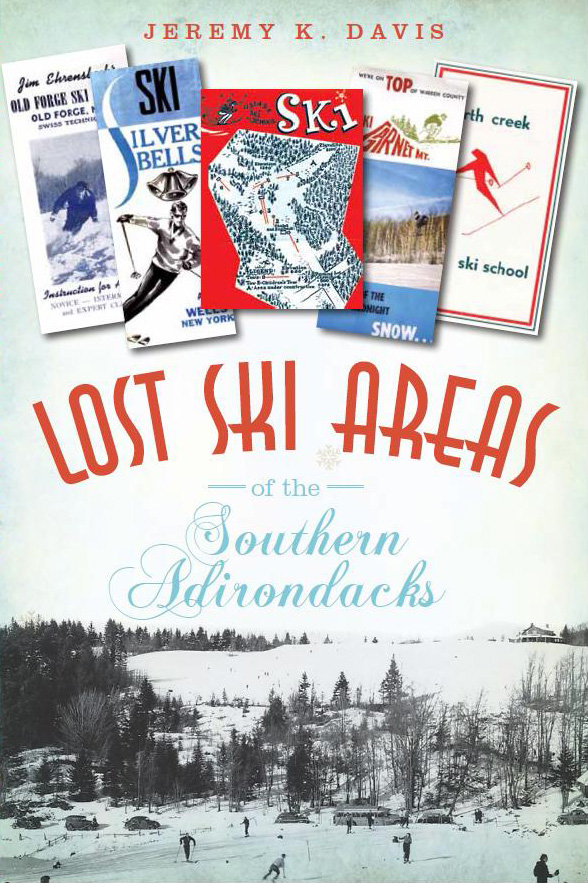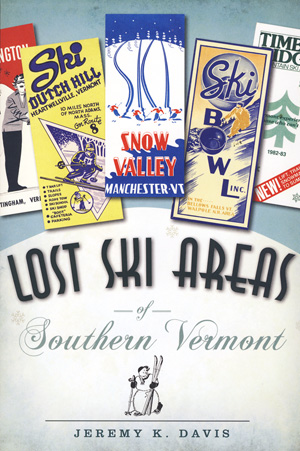NELSAP is proud
to offer the following books on sale, including the brand new Lost
Ski Areas of the
Berkshires!
Order Form Here
 |
 |
 |
 |
 |
|
Lost Ski Areas of the Berkshires
The Story of 37 Lost Ski
Areas, Proposed Ski Areas, and a Guide to Open Ski Areas
90 photos and 240
pages. Published by Acadia Publishing and The History Press |
Lost Ski Areas of the Northern Adirondacks
The Story of 47 Lost Ski Areas,
3 Proposed, and 2 Restored Areas
Includes Guide to Open Ski Areas
75+ Photos and 192 Pages
Published by The History Press |
Lost Ski Areas of the Southern Adirondacks
The Story of 38 Lost Ski Areas and 3 Restored Areas
Includes Guide to Open Ski Areas
75 Photos and 160 Pages
Published by The History Press |
Lost Ski Areas of Southern Vermont
The Story of 60 Lost and 7 Hybrid Ski Areas
180 Photos and 160 Pages
Published by The History Press |
Lost Ski
Areas of the White Mountains
The Story of 60 Lost Ski Areas
180 Photos and 128 Pages
Published by The History Press |
More about the
brand new Lost Ski Areas of the Northern Adirondacks!
Some of the northern Adirondacks'
most beloved ski areas have sadly not survived the test of time despite the
pristine powder found from the High Peaks to the St. Lawrence. Even after
hosting the Winter Olympics twice, Lake Placid hides fourteen abandoned ski
areas. In the Whiteface area, the once-prosperous resort Paleface, or Bassett
Mountain, succumbed after a series of bad winters. Juniper Hills was "the
biggest little hill in the North Country" and welcomed families in the Northern
Tier for more than fifteen years. Big Tupper in Tupper Lake and Otis Mountain in
Elizabethtown defied the odds and were lovingly restored in recent years. Jeremy
Davis of the New England/Northeast Lost Ski Areas Project rediscovers these lost
trails and shares beloved memories of the people who skied on them.
More about Lost Ski Areas of
the Southern Adirondacks:
The Adirondack region has long
been a favorite of skiers, as its beautiful mountains and deep snow cover
provide it with the perfect landscape. Downhill ski areas developed during the
Great Depression, when New Yorkers looked for an affordable escape to beat the
winter blues. Over the coming decades, ski areas expanded with new lifts, lodges
and trails. Despite the popularity of the sport, many ski areas have
disappeared, yet countless people still hold fond memories of them. Ski
historian Jeremy Davis chronicles the history of these vanished ski areas with
photographs and memories from those who enjoyed them, while also paying homage
to restored and classic skiing opportunities still available in the Adirondacks.
More about Lost Ski Areas of
Southern Vermont:
"Hidden amongst the hills and
mountains of southern Vermont are the remnants of sixty former ski areas, their
slopes returning to forest and their lifts decaying. Today, only fourteen remain
open and active in southern Vermont. Though they offer some incredible skiing,
most lack the intimate, local feel of these lost ski trails. Jeremy Davis,
creator of the New England Lost Ski Areas Project, looks into the
over-investment local competition, weather variation, changing skier habits,
insurance costs and just plain bad luck that caused these areas to succumb and
melt back into the landscape. From the family operated Hogback in Windham County
to Clinton Gilbert's farm in Woodstock, where the very first rope tow began
operation in the winter of 1934, these once popular ski areas left an indelible
trace on the hearts of their communities and the history of southern Vermont."
Each book features never before
published photographs, maps, and memories of these former ski areas in the
Northern Adirondacks, Southern Adirondacks, Southern
Vermont and across the White Mountains. Each book also contains information on
the remaining small, community-type ski areas that still operate in the region.
To place an order for any or all
books, please fill out
this form, and email it to
nelsap@yahoo.com. I will then reply with
your invoice total. Let me know if you have any questions!
~Jeremy Davis, Founder, NELSAP
Head
back to the Main Page




